62 F. maximum temperature yesterday in the Twin Cities.
63 F. average high (somewhere*).
55 F. high on April 25, 2016.
April 26, 1954: Extremely heavy downpours occur in Mora, where nearly 7 inches of rain would fall in a little over 10 hours.
* who writes this crap?
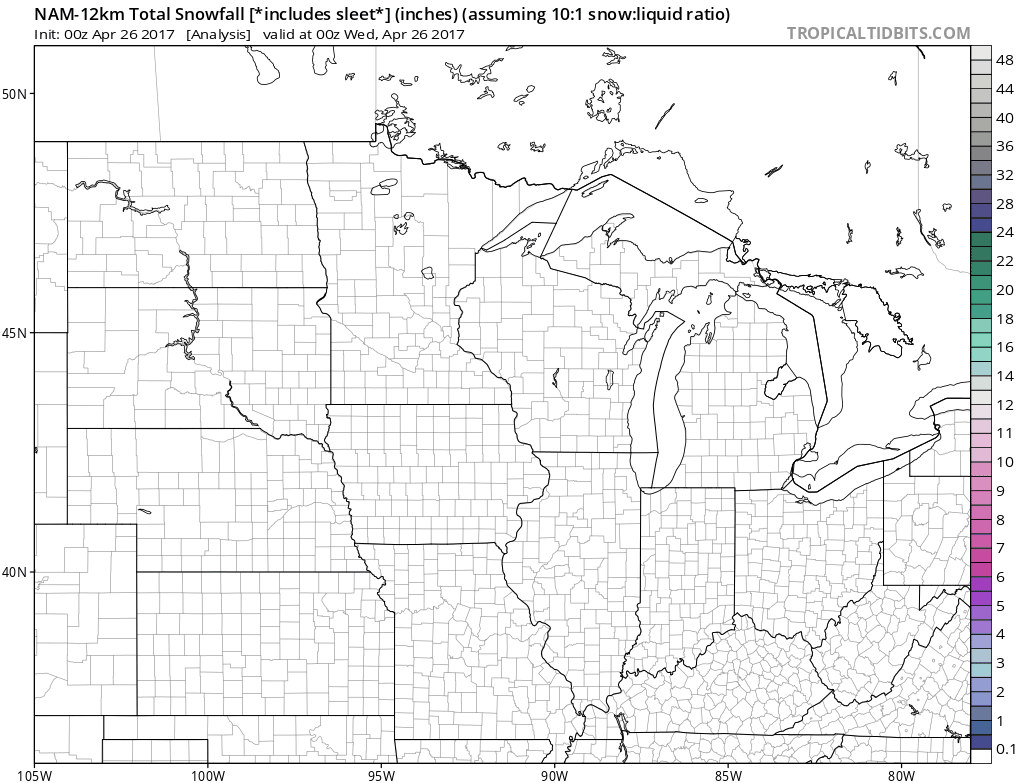
Perils of “Fake Spring” – March Relapse Imminent
“Humor is just another defense against the universe” griped Mel Brooks. I’ve found Minnesotans to be stoic, hard-working and upbeat. But locals quickly lose their sense of humor when snow falls on their green, freshly-mowed lawns.
This is why you don’t plant annuals until after Mother’s Day. A frost or freeze is possible Friday morning; another swipe of slush and frost early next week.
Even though winters are mellowing over time, the warming is “lumpy” – not uniform or consistent. We saw a freakishly warm February, with plants in full bloom a month early to our south. But late-season frosts/freezes are still a fact of life, resulting in crop damage when plants bloom prematurely. 90 percent of South Carolina’s peach crop was just wiped out by a late freeze.
Expect an inch of rain today, ending as a few flakes by evening. A coating of slush may delight residents of central Minnesota, a few inches far north.
NOAA’s GFS model pulls more rain, maybe spiked with snow, into town Sunday and Monday; a sloppy accumulation is not out of the question by Monday. On May 1.
Mayday! Mayday!
NAM snowfall prediction above: NOAA and Tropicaltidbits.com.
What Month Is This Again? The National Weather Service in Duluth sent this graphic out, calling for a few inches of slushy snow, but a risk of as much as a third of an inch of glaze ice over the Arrowhead and North Shore. Travel will be problematic, especially tonight from Two Harbors to Lutsen and Grand Marais.
Enhanced Risk. NOAA SPC is outlining an area to keep an eye on later today, from Little Rock and Fort Smith to St. Louis, where a few large tornadoes can’t be ruled out. I wouldn’t be surprised to the Storm Prediction Center upgrade this to a moderate risk. Stay tuned – and stay alert over the Mid South and Lower Mississippi River Valley.

Non-Stop Parade of Storms. Which isn’t all that unusual for late September, but the frequency of the storms sweeping across the USA is impressive. Today New England finally dries out as the East Coast looks forward to a well-earned warming trend. Heavy T-storms push into the Ohio Valley while rain ends as sloppy wet snow for Minnesota. A wet Wednesday for northern California and the Pacific Northwest gives way to drier skies Thursday and Friday.
Wet Bias To Continue. After an Atlantic firehose of moisture dropped up to 8″ on the Raleigh area on Tuesday NOAA models predict a wide swatch of the Mississippi River Valley and Ohio Valley picking up 2-5″ rains over the next week from a series of storms, each one brimming with moisture from the Gulf of Mexico. No rest for the weather-weary.
Jackets Return. I can’t bear to dig out a coat in late April; that would be bad form. But a sweatshirt or jacket the next couple of days? Good move. Expect raw weather today and Thursday before slight recovery late week. Spring doesn’t really return until the end of next week. The first weekend of Mayy looks just fine, based on ECMWF guidance for MSP. Graphic: WeatherBell.
May Block? Once again GFS is hinting at a temporarily-stalled swirl of cold air aloft over the Great Lakes and Ohio Valley looking out 2 weeks, capable of heavy showers and T-storms. Meanwhile the west coast may see a warming trend with summerlike heat returning to much of California and Arizona by the second week of May.
Worst Flooding Since Hurricane Matthew Swamps North Carolina. USA TODAY has a good summary of the weather headaches in the Raleigh/Durham area: “People in North Carolina are paying attention to rising rivers after storms dumped several inches of rain across much of the state. Gov. Roy Cooper warned residents on Tuesday to stay wary after the state’s heaviest rainfall since last year’s Hurricane Matthew. State emergency management officials are warning of possible flooding along the Neuse River near Clayton and Smithfield, and the Tar River in Tarboro and Greenville. The rain caused disruptions to the morning rush hour, and several motorists also had to be rescued from their cars, according to ABC 11. Flood warnings were posted for rivers in 33 eastern counties...”
48 Hour Rainfall. As much as 7-8″ of rain fell near Raleigh, North Carolina over 2 days – that’s roughly 2 month’s worth of rain in 48 hours. The result was severe flash flooding and river flooding.
North Carolina Flood and Inundation Mapping and Alert Network. Check out this web site for real-time updates on the severity of flooding across North Carolina.
The Climate Context for Raleigh’s Rains and Florida’s Fires. Here’s perspective from Andrea Thompson at WXshift: “…The number of heavy events has continued to be well above average over the last couple of years, maintaining the upward trend,” Ken Kunkel, a climate scientist with the North Carolina Institute for Climate Studies and N.C. State University, said in an email. A Climate Central analysis shows that by mid-century, heavy runoff from rain-driven inland flooding will increase between 20 and 40 percent. Of course, climate change isn’t the only thing that impacts flooding, as the built environment, such as impermeable pavement, exacerbates flooding in urban areas like Raleigh. While this area of North Carolina has seen about 400 percent of what would normally fall over the past two weeks, mostly from this storm, much of Florida has been left thirsting for storms to quench the dry conditions that are helping to fuel wildfires. The blazes have burned the largest area of the state since 2011, some 115,000 acres, and will likely cost millions of dollars in damage and fire fighting costs…”
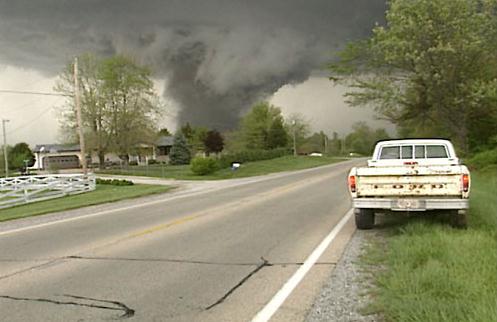
Tornado-Watchers Are Missing More Storms, Giving Shorter Notice – And Saving More Lives? There appears to be a tornado-trade-off of sorts, as described by Christian Science Monitor: “…Tornado forecasters’ performance gets measured by three key numbers:
- False-alarm rate (FAR), the percentage of tornado warnings issued for storms that never touch down
- Probability-of-detection (POD), the percentage of warnings that accurately predict tornadoes
- “Lead-time,” the minutes between when a warning is issued and when the storm touches down
“Since around 2011, both tornado lead-time and detection have gotten worse. But the false alarm rate has improved (decreased),” The Washington Post reported on April 20. Harold Brooks, a senior scientist at the National Severe Storms Laboratory, explains that he and other forecasters face a trade-off: Longer lead-times and higher POD’s versus a lower false alarm rate. As forecasters wait for more evidence – from radar, spotter teams, and other sources – before sounding the alarm, they issue fewer false ones. But they’re also more likely to miss some, and give residents less time to take cover…”
Portraits of the Earth-Moon System. The Atlantic has done a terrific job assembling some of the best photos of Earth and the Moon on one web link I’ve ever seen: “The Earth and its moon almost form a binary planet system. The moon is enormous—relative to the size of its planet—compared with the rest of the solar system. Since the 1960s, spacecraft and astronauts have been able to “step back” far enough to capture combined portraits of the Earth and its moon, separated by some 240,000 miles. Gathered below are some of the best of these portraits, some from as far away as 100 million miles...”
Image credit: NASA DSCOVR satellite. “Earth and the far side of the moon on July 5, 2016, also featuring Typhoon Nepartak over the Pacific Ocean, imaged by NASA’s Deep Space Climate Observatory (DSCOVR) satellite, about 1.5 million km (930,000 mi) from Earth.”

Scientists Have Discovered a Worm That Eats Plastic Bags and Leaves Behind Antifreeze. Quartz has the story: “The wax worm, a caterpillar typically used for fishing bait and known for damaging beehives by eating their wax comb, has now been observed munching on a different material: plastic bags. Scientist Federica Bertocchini of the Institute of Biomedicine and Biotechnology of Cantabria in Spain first noticed the wax worms’ plastic-eating skills when she was cleaning up a wax worm infestation in one of the beehives she keeps at home. She put the worms in a plastic bag, tied it closed, and put the bag in a room of her house while she finished cleaning the hive. When she returned to the room, “they were everywhere,” Bertocchini said in a statement. They’d escaped by chewing their way out of the bag, and fast…”
Photo credit: “A wax worm, aka a plastic bag destroyer.” (skeeze/Pixabay).
Map credit:
…Electric charging stations that offer a DC faster charger option can reduce that waiting time to around 30 minutes, but they can be difficult to find. Tesla owners, on the other hand, can easily find a nearby Supercharger on their massive touchscreen console. A Tesla Supercharger stations can restore 170 miles of range in just 30 minutes. As of late February, the company had 373 Supercharger stations in North America. It also had 805 stations worldwide with a total of 5,159 chargers. Tesla plans to double the number of Superchargers globally from roughly 5,000 to 10,000 worldwide. The company will add more than 1,000 Supercharger stations in California. Here’s a map of the new stations coming to North America (gray dots are new sites)...”
Charge Me Up: Rural Electric Car Drivers Face “Range Anxiety”. Driving an older (2013) Tesla Model S with a range of 200 miles, I understand the concerns pointed out in a story at Telegraph Herald: “…There are more than 18,000 electric car charging stations in the United States, and the number of outlets at those stations has more than tripled over five years to about 48,000, according to federal data. But they often are few and far between in rural areas. That can leave electric vehicle pioneers in the backcountry with chronic “range anxiety,” the fear that their batteries will run out and leave them stranded.

The Only Constant is Disruption. “Grandpa, tell me again how people once told other people the weather forecast!” Is this a conversation I’m going to have in 15 years? Will humanoids be optional, computers so powerfully pervasive that meteorologists go the way of Betamax and 8-tracks? I wish I knew, but there’s little doubt all of us will have to adapt to careers of lifelong learning. With robotics, automation and artificial intelligence half of all current white collar jobs may go away. A century ago 41 percent of Americans were farmers; with mechanization only 2 percent of us farm today. How best to prepare for jobs that don’t even exist yet? We need smart strategies that prepare us for these coming (seismic) shifts.
The Challenge of Our Disruptive Era. U.S. Senator Ben Sasse from Nebraska has an Op-Ed at The Wall Street Journal everyone should read: “…What’s happening now is wholly different. The rise of suburbia and exurbia, and the hollowing out of mediating institutions, is an echo of the changing nature of work. In the 1970s, it was common for a primary breadwinner to spend his career at one company, but now workers switch jobs and industries at a more rapid pace. We are entering an era in which we’re going to have to create a society of lifelong learners. We’re going to have to create a culture in which people in their 40s and 50s, who see their industry disintermediated and their jobs evaporate, get retrained and have the will and the chutzpah and the tools and the social network to get another job. Right now that doesn’t happen enough…”
Image credit: David Gothard.
Science Under the Populist Gun. The author of the story at Scientific American warns that people who have trouble putting food on their table may not see the value of research and science: “…The president promised his populist adherents he would bring jobs back by restructuring trade deals, deporting undocumented workers and eliminating federal regulations. But he’s almost certain to fail across the board because technology is the real source of the job losses. And it’s simply not possible for the president to decree a return to the halcyon days of Middle Americana. The permanently displaced workers and those that are on the cusp of dislocation might not blame President Trump for failing to deliver on his promises, but they could direct their populist, anti-elitist anger toward the architects of the technological advances that have diminished their lives. As they see it, the devils are big business that does not have their interests at heart, big government that is too remote and dysfunctional, Wall Street that hums tirelessly to further enrich the already wealthy and, finally, the ivory towers of academia, which house the archetypal elites…”
Photo credit: “Abandoned factory, Brattleboro, VT.” Credit: Beyond My Ken Wikimedia (CC BY-SA 2.0)

The World May Begin to Do More But Consume Less. Here’s an excerpt of a story at The Los Angeles Times that resonated: “…Sonenshein’s basic argument is that our tendency to think of “more” as the key to success –– as in more money and more stuff –– is all wrong. By always seeking more, we tend to overlook the possibilities that already exist, he says. When we focus instead on using the resources we have, we stretch ourselves, thereby unlocking creativity and problem-solving skills. It makes a lot of sense. And the more I’ve thought about this idea, the more I have noticed variations of the doing-more-with-less theme popping up all over...”
Lilium: All-Electric, Vertical Take-Off and Landing Jet. Oh boy, it’s getting closer. Here’s an explainer from Lilium: “Lilium enables you to travel 5 times faster than a car by introducing the world’s first all-electric vertical take-off and landing jet: an air taxi for up to 5 people. You won’t have to own one, you will simply pay per ride and call it with a push of a button. It’s our mission to make air taxis available to everyone and as affordable as riding a car. In 1894, Otto Lilienthal began experimenting with the first gliders and imagined a future in which we could all fly wherever we want, whenever we want. Lilium is turning that dream into reality. We are bringing personalized, clean and affordable air travel to everyone.”

Prince Had 2,000 Pairs of Shoes – That We Know Of. Any why the heck not? We miss you Prince. Here’s an excerpt from Quartz: “…The team responsible for maintaining the mansion has cataloged 7,000 of the late musician’s belongings—and 2,000 of those are shoes. “Every outfit [tagged to far] had a matching pair of shoes,” Paisley Park’s archival director Angie Marchese, told the New York Times (paywall). “Most of them are ankle boots and have three-inch heels on them… Even his flip-flops were wedges. Even his tennis shoes are wedges.” Marchese described opening entire closets stuffed with footwear, and finding special pairs of shoes such as the teal set he wore at the 2007 Super Bowl, to match the uniform color of the Miami Dolphins, whose stadium the game was played at. And there are thousands of shoes because Prince rarely wore the same outfit twice. The team found 35 jackets and 35 pairs of pants from his 1984 “Purple Rain” tour alone…”
“Zen and The Art of Motorycle Maintenance” Author Robert M. Pirsig Dies at 88. I can’t tell you the influence this book had on me, like so many others who read it (multiple times). I heard a stat that only the Bible has sold more copies than this book. If you haven’t read it – do yourself a favor. It’s timeless. Here’s a clip from NPR: “…Zen was published in 1974, after being rejected by 121 publishing houses. “The book is brilliant beyond belief,” wrote Morrow editor James Landis before publication. “It is probably a work of genius and will, I’ll wager, attain classic status.” Indeed, the book quickly became a best-seller, and has proved enduring as a work of popular philosophy. A 1968 motorcycle trip across the West with his son Christopher was his inspiration…”
Photo credit: “Author Robert Pirsig and his son Chris in 1968. Pirsig, who wrote Zen and the Art of Motorcycle Maintenance, died Monday at age 88.” William Morrow/HarperCollins.
“The least initial deviation from the truth is multiplied later a thousand fold.” – Aristotle
This Milky Way “Flightlapse” Was Shot by an Airline Pilot. Here’s an excerpt from a video link and story at PetaPixel: “Here’s a gorgeous nighttime timelapse shot from a different perspective: this “FlightLapse” was captured from the cockpit of a Swiss airliner during a flight from Zurich, Switzerland, to Sao Paulo, Brazil. It shows the world, glowing cities, and other airplanes passing below the Milky Way above. The timelapse was created by 30-year-old Sales Wick, a photographer, film producer, and airline pilot based in Switzerland who’s also the founder of the film agency SkyProduction…”
For People Who Can’t Be Bothered With Real Mud. In an era of fake news it’s only natural (organically pathetic) that a consumer can no purchase blue jeans with fake mud for only $425. No need to “work outside” and earn your mud the hard, invigorating way. No, now you can buy mud-cred the old fashioned way. With your credit card. God help us all.

TODAY: A cold, heavy rain tapers. Winds: N 10-20. High: 45
WEDNESDAY NIGHT: Few sprinkles or flurries. Low: 34
THURSDAY: Feels like March. Mostly cloudy skies. Winds: NW 10-15. High: 42
FRIDAY: Early frost risk. Partly sunny and cool. Wake-up: 33. High: 53
SATURDAY: Drier day of weekend. Clouds increase. Winds: NE 10-15. Wake-up: 39. high: 54
SUNDAY: Rain may mix with wet snow. Really. Winds: N 15-25. Wake-up: 38. High: 43
MONDAY: Mix slowly tapers. Slushy lawns early? Winds: N 10-20. Wake-up: 34. High: 44
TUESDAY: Sunny breaks, vague hints of spring. Winds: NW 7-12. Wake-up: 36. High: 57
Climate Stories….
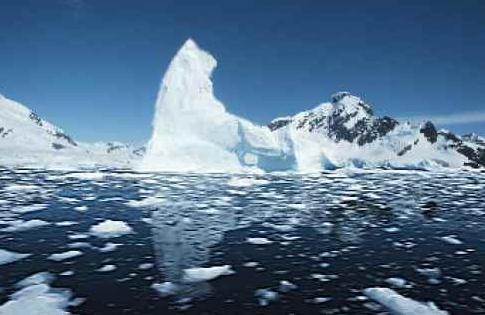

Climate Change Offers Huge Investment Opportunity: Experts. What will get business on-board, focused on solutions? The profit motive – every threat is a (financial) opportunity, as described by Reuters: “Climate change should be grasped as an opportunity to attract vast capital flows into low-carbon investments, create jobs and spur economic growth, rather than viewed as a money-absorbing burden, top officials and experts said. Yet while trillions of dollars are potentially available for climate investments and countries like India are blazing a trail in bringing cheap solar power to millions, making sure the world’s poorest benefit will prove a major challenge, a World Bank meeting heard late last week. “It’s the biggest opportunity in the history of the world – it’s the biggest investment opportunity, but we have to have a clear vision, we have to have policy leadership… to bring the world community together to get the financing that is needed to move the momentum more quickly,” former U.S. Vice President Al Gore told the discussion…”
Can We Fight Climate Change With Trees and Grass? Here’s an excerpt from MIT Technology Review: “Can we use trees and other plants as a weapon in the fight against climate change? Earth’s greenery comes with natural carbon-capturing abilities, but now several studies are investigating how to tweak those tendencies to have a maximum impact on carbon dioxide levels in the atmosphere. In 2014, the Intergovernmental Panel on Climate Change announced that plants would have to be a major part of the world’s efforts to capture CO2. The idea would be to have trees and grasses suck up CO2 as they grow, then burn or process them into fuels to generate power while capturing any CO2 produced along the way. This process is known as “bioenergy plus carbon capture and storage,” or BECCS. We’re starting to see increasingly large tests of the technology roll out...”
Early Warmth, Late Frost Wreaks Havoc on Wine-Growing Regions of France, Italy. Here’s an excerpt from Wine Spectator: “…This year the plants were 15 days in advance,” said Blot. “It’s impossible to protect the entire vineyard. This year, as of today, I lost maybe 10 percent of the crop.” Better than last year, but still a critical loss. To the east and north, Burgundy and Champagne also reported heavy damage, but growers were focusing on trying to combat the incoming cold front before they sent detailed damage reports. To the southwest, the Gironde Chamber of Agriculture reported frost damage in the greater Bordeaux region, including the southern Médoc, sections of St.-Emilion and Lalande de Pomerol, Bergerac, and the area around Blaye. Of course, climate change means different things to different wine regions. And far south in the Languedoc, frosts are so rare that this past week’s episode is the first major frost since 1998. “Climate change has brought us warmer springs and fewer cold episodes,” said Jerome Villaret, director of the Languedoc wine council…”
Local Climate Change Panel Says Use of Fossil Fuels is Contributing to Warming of the Planet. Here’s a clip from The Chicago Tribune: “…Skilling said he previously didn’t believe in climate change, or that humans were directly causing it. “When I used to hear the polar ice caps will melt, I said, boy, you have to prove that to me,” he said. “But it’s happening. The models have been successful.” Mueller said the negative impact of global warming on the planet’s biodiversity causes plants and animals to be more stressed, more susceptible to disease and to encroachment from invasive species. Wuebbles said the increase in the number of severe weather events and their intensity is “tied directly to changes occurring in the climate system.” The National Oceanic and Atmospheric Administration has kept track of billion-dollar weather events since the early 1980s, and the number of such events has increased notably in recent decades, he said. “People who think climate change is somewhere in the future, it’s later, maybe it affects future generations – no, it’s here now, it’s only going to get worse,” Wuebbles said...”
Photo credit: “U.S. Rep. Brad Schneider moderates a climate change panel at the Chicago Botanic Garden on Saturday, featuring, from left to right, Donald Wuebbler, professor of atmospheric science at the University of Illinois; Gregory Mueller, chief scientist and Neagunee Foundation vice president of science at the Chicago Botanic Garden; Elisabeth Moyer, associate professor at the Energy Policy Institute at the University of Chicago; and Tom Skilling, chief meteorologist for WGN-TV.” (Lee V. Gaines / Pioneer Press)
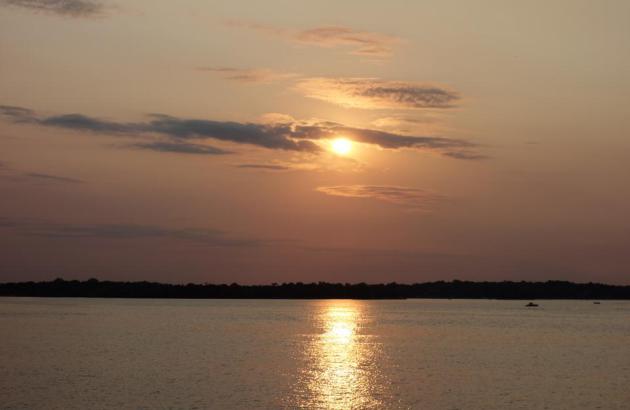
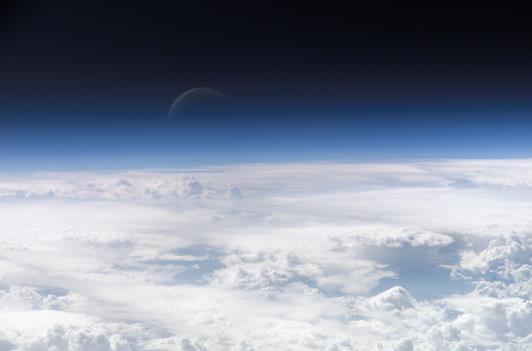
What Americans Really Think About Climate Change. It seems a little like random violence – it will happen to someone else. There’s no way it can happen to me! Here’s an excerpt from The Atlantic: “…Climate change is a “stuck” issue in American politics. The polling continually points to a larger conclusion: Global warming is a highly partisan issue that most voters do not consider particularly significant to them, personally, even if they are worried about it. A Yale poll from last month put it starkly: More than 50 percent of Americans believe that climate change will “harm people in the United States,” but fewer than 40 percent of Americans believe it will “harm me, personally.” A lot of people know about climate change, and a lot of people think it is generally bad. But they do not change their votes because of it. Americans may change their vote because of economic fear, or defense policy, or to protect their property or social privileges. But they do not vote because the ice caps are melting. This is the heart of the climate issue…” (Image credit: NOAA NCDC).
Rising Sea to Displace 500,000 New Orleans Area Residents, Study Says – See Where They Might Go. Again, we already have climate refugees along the coast of New Orleans and Alaska. Here’s an excerpt from NOLA.com: “Texas, brace yourself. Over the next 83 years, a half-million southeast Louisiana “climate migrants” might be headed your way. A study published this week predicts that sea level rise will push hundreds of thousands of people out of U.S. coastal cities such as New Orleans. It says the population will boom in nearby inland cities such as Austin. The University of Georgia study is considered the first detailed look at how inland cities might be affected by sea level rise. It estimates more than than 500,000 people will flee the seven-parish New Orleans area by 2100 due to sea level rise and the problems that come with it, including frequent flooding and greater exposure to storm surges. That’s more than one third of metro New Orleans’s current population…”
Photo credit: “Pontchatoula residents flee rising waters in 2016. A new study predicts that thousands of Louisiana residents will be heading to Texas and other states to avoid rising sea levels over the next century.” (Photo by Ted Jackson, Nola.com | The Times-Picayune).
If You Live Inland, Don’t Think Sea Level Rise Won’t Affect You. With more perspective here’s a story link and excerpt at Ars Technica: “There has been a lot of talk about the millions of people worldwide whose homes will be at the mercy of rising sea levels. Within the US, a 1.8-meter rise in the oceans by 2100 could displace as many as 13.1 million people. Worldwide, up to 180 million people could be at risk. There has been less talk about where exactly those people will go when they leave their homes. Research on climate migration has painted sea level rise as “primarily a coastal issue,” writes Mathew E. Hauer in Nature Climate Change this week. But the inland regions that absorb climate change migrants will need to have sufficient transport, housing, and infrastructure to absorb the migrants...”
Photo credit: Richard at Flickr.
The Effects of Climate Change Will Force Millions to Migrate. Here’s What This Means for Human Security. The Washington Post has more insight on climate-related migration: “…Climate change is more than melting ice caps and swamped islands. The environmental effects of climate change — droughts, floods and severe weather, for instance — have increasingly put more people on the move. In 2015, the U.N. Refugee Agency counted 65.3 million people around the world as “forcibly displaced,” including about 40 million within their home countries. Wars, ethnic conflicts, economic stresses, famines and disasters are among the reasons people leave their homes. Less understood, perhaps, is how climate-induced environmental changes — such as increased flooding, desalinization, droughts or desertification — amplify these drivers of migration. What are the policy options to help people stay in place or minimize the security concerns related to migration? These questions are becoming more and more important to figure out...”
Photo credit: “A rescuer of the Malta-based Migrant Offshore Aid Station carries a migrant baby rescued from a wooden boat in the Mediterranean Sea off the coast of Sabratha in Libya this month.” (Darrin Zammit Lupi/Reuters)
More and More Fossil Fuel Companies Support a Carbon Tax – Here’s a Running List. Who would have predicted this a year or two ago? Here’s an excerpt from Quartz: “…Royal Dutch Shell ($233 billion) “If Trump does not go down the path of a carbon tax, we should not lose our resolve. We should stick to our values as Canadians to do something to protect the environment.” — Michael Crothers, President of Shell Canada, November 2016. “Carbon-pricing systems encourage the quickest and most efficient ways of reducing emissions widely.” — Ben van Beurden, CEO of Royal Dutch Shell, October 2015.
Exxon Mobil ($218 billion) “One option being discussed by policy makers is a national revenue-neutral carbon tax. This would promote greater energy efficiency and the use of today’s lower-carbon options, avoid further burdening the economy, and also provide incentives for markets to develop additional low-carbon energy solutions for the future.” — Darren Woods, CEO of Exxon Mobil, February 2017…”
Photo credit: “Stopping the tragedy of the commons.” (Reuters/Edgar Su)

